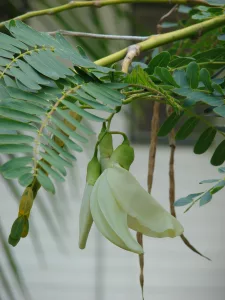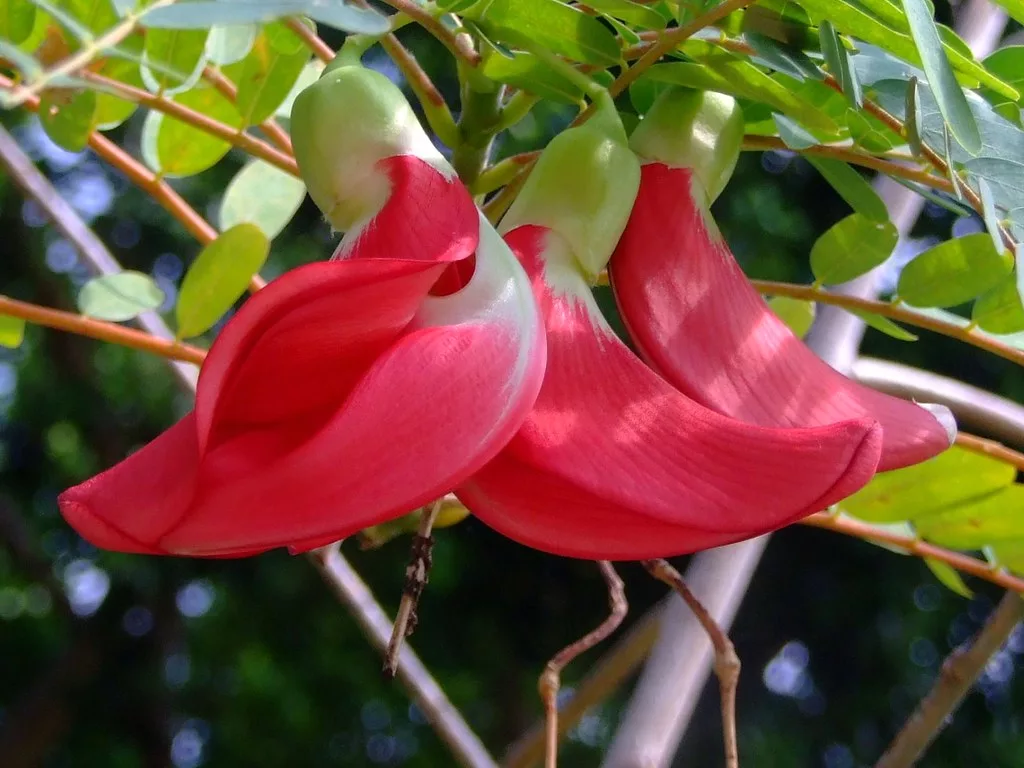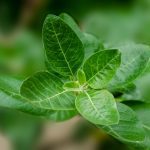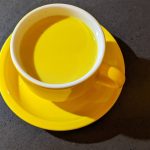Sesbania grandiflora, or Sesban, is also known as Vegetable Hummingbird, Agati or Hummingbird Tree. Sesbania grandiflora takes its name from the spectacular, large, papilionaceous white or cream flowers with a hint of pink in the bud stage that it bears.
Sesbania grandiflora is a small, erect, fast-growing, open-branched, unarmed perennial tree that can reach a height of 15 m and a diameter of 25-30 cm. It grows well in a variety of soils, including waterlogged and poor soils, and is sensitive to frost.
The wood is soft and white and the trunk is almost 30 cm long with drooping branches and a light grey, corky, deeply furrowed bark. The leaves can reach 30 cm in length and are pinnately compound with 20 to 50 leaflets. The leaflets are 2-3 cm long and vary in shape from oblong to elliptic with a blunt tip.
The large flowers can be any shade of white, yellow, pink or red and are 7-9 cm long. The calyx is 15-22 mm in diameter and the corolla has a standard wing, a stamen tube and a glabrous ovary and style.

The pods, which can be 20 to 60 cm long, are cylindrical, green, indehiscent and contain 15 to 50 seeds. The beans are 3.5 millimetres long, 1 gram in weight, elliptical in shape and a deep reddish brown colour.
The leaves are glaucous and dark green; they are pinnately compound and can reach 30 cm in length, with 20-50 individual leaflets. The leaflets are 2-3 cm long and vary in shape from oblong to elliptic with a blunt tip. They are one of the world’s staple foods and are typically bitter, sour and slightly tart in flavour.
All parts of S. grandiflora can be consumed, from the leaves to the seeds, pods and flowers. The flowers are the most commonly used part, and white flowers are preferred over their red counterparts. The expected lifespan of the tree is around 20 years.
Sesbania grandiflora has many medicinal uses:
- Relieves pain and inflammation.
- Helps get rid of worms in the body, itching, leprosy, night blindness, epilepsy and gout. It can also be used for ophthalmia and as a tonic.
- It’s a tasty treat for people with liver congestion and bronchitis. It’s also useful for detecting ozena, or noxious odours from the nose.
- It improves memory, acts as a laxative and reduces the risk of cancer, fever and anaemia.
- It is used to treat nasal catarrh (inflammation of the nasal mucosa resulting in discharge), sinusitis (inflammation of the sinuses) and headaches.
- It can also heal bruises.
How to use Sesbania grandiflora:
- The decoction of the roots is used to treat inflammation.
- An infusion of the leaves can treat the second group of conditions mentioned.
- The third group of conditions listed above can be treated by drinking the flower infusion.
- A decoction made from the fruits treats the fourth group of diseases listed.
- For the fifth group of diseases listed above, the juice extracted from the leaves or flowers is the remedy.
- A poultice of sesbania leaves is often used to treat bruises.
- The pounded bark is applied to scabies and used for ulcers of the tongue and digestive tract, and the juice of the roots taken with honey is an effective expectorant for soothing a cough.
The Sesbania grandiflora plant is edible from leaf to seed to pod to flower. The most common use is in the form of flowers, especially the white ones rather than their red counterparts. They can be eaten raw in salads or curries, or cooked and steamed as a side dish or vegetable.
South and Southeast Asia are the likely cradles of Sesbania grandiflora’s diversity, with Indonesia as its possible epicentre. Its closest relative is Sesbania formosa, an Australian species.
Today, agathi plantations can be found in the warmer regions of South America, Africa and southwest Mexico. Agathi has been grown in West Africa for the past 150 years. Cuba, the Dominican Republic, Hawaii and Nepal all consider it to be one of the most
Disclaimer: This is for informational purposes only.
Did you find this helpful? Let us know in the comments.
Source: Health Benefits, Home Remedies and more
You can also visit our Facebook and YouTube pages to know more about plants and their health benefits.
You might also like:








